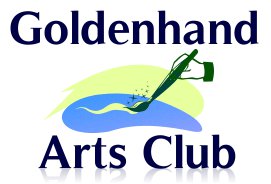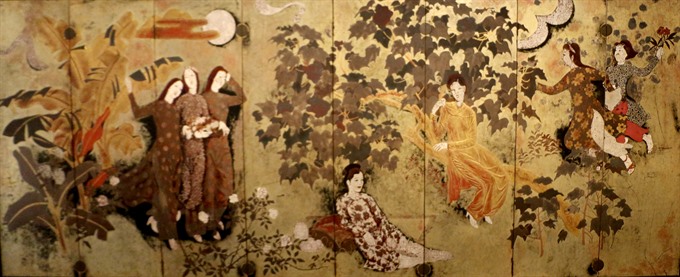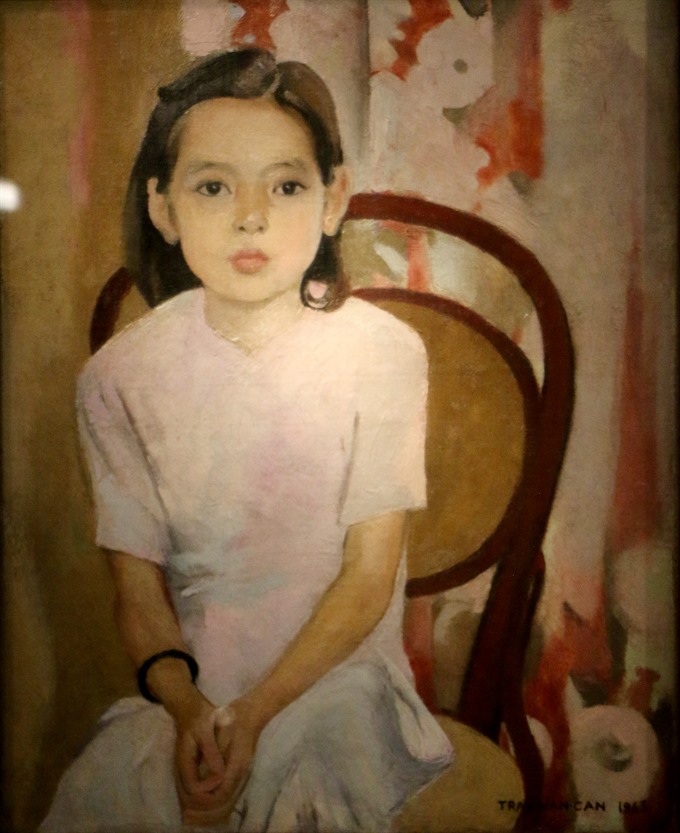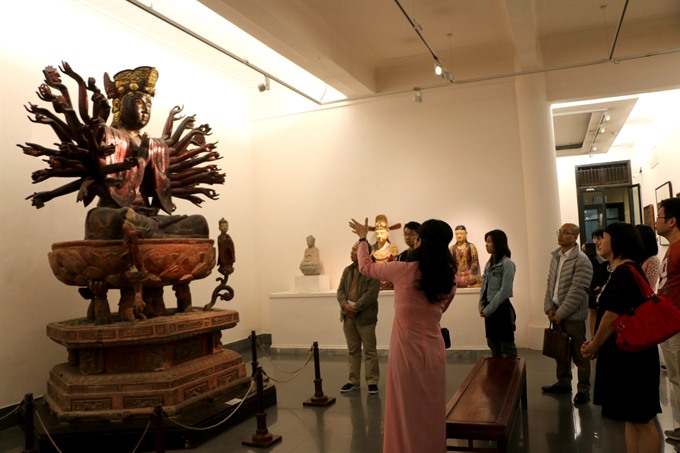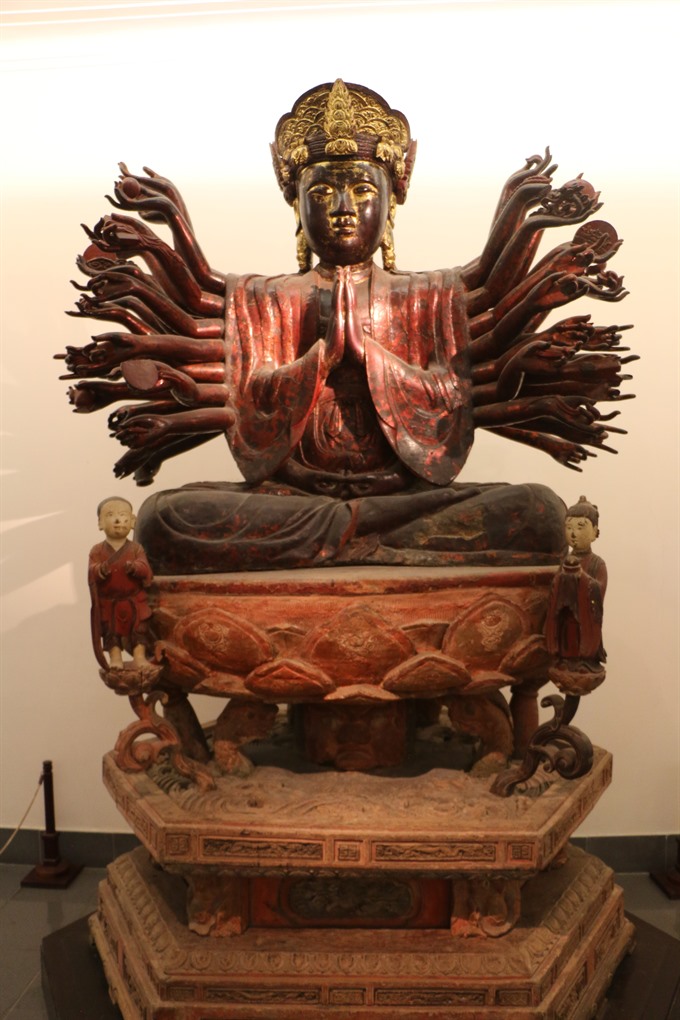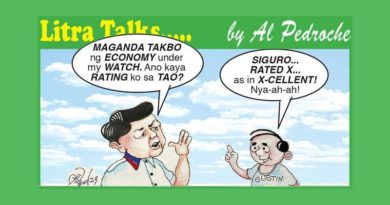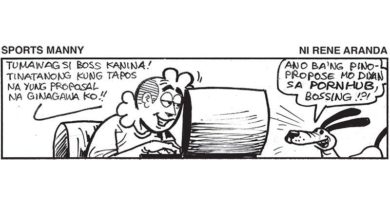ASEAN ARTS: Việt Nam’s Fine Arts Day – Features: A gem of art in the heart of Hà Nội By Viet Nam News
| Masterpiece: Young ladies in garden, lacquer by Nguyễn Gia Trí. — VNS Photo Đoàn Tùng |
.
In a high-ceiling room on the second floor of the Việt Nam Fine Arts Museum in Hà Nội, a young curator has been briefing a group of over 20 tour operators on an oil painting titled “A Ploughing Day”, painted in 1960 by one of the country’s masters, Lưu Công Nhân.
“Could you tell which season is depicted in this painting?” asked a young woman.
The visitors, obviously a well-travelled and well-read group of viewers, found the question too easy to answer. After yet another question, one of the viewers excused himself to provide more on the painting.
“This is a ploughing day for the winter-spring crop. Look at the gray sky, the black scarf on the woman’s head. Dated in 1960, it means the first days of the co-operative time in the North of Việt Nam.
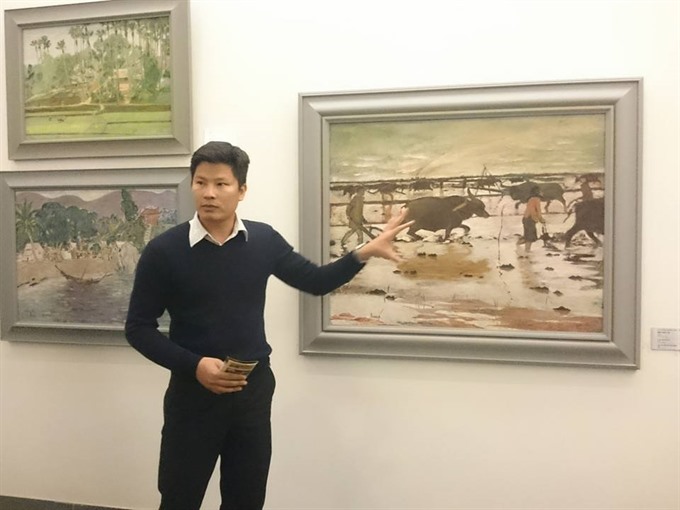 |
| Art expert: Nguyên from Hanoitourist explains Lưu Công Nhân’s Ploughing painting. — VNS Photo Mỹ Hà |
.“Ploughing has always been a man’s job, why do we see a woman here? Because the men had gone to the front. People in the North in the 1960s were motivated to work double one’s capabilities to provide resources for the liberation movement in the South. No more private rice paddy fields, all the fields belong to the collective. This explains why there are so many buffaloes in the painting.
The group gave him looks of approval instead of a round of applause.
In an interview after the session, Nguyễn Hồng Nguyên, 33, said, “I’ve travelled a lot, and read a lot. What I understand from history and the country life gave me the explanation. I did not get it from books on art.”
Having been to more than 50 countries and to the world’s most prestigious art galleries in France, the UK and Russia, Nguyên said, “My international visitors rarely request a tour to the Fine Arts Museum. Only a few did and they spend around one hour and a half here, no more!”
In an attempt to lure more visitors to the museum, several tour programmes have been launched since January this year and a list of nine National Treasures had been recognised.
From a visitor’s perspective, it’s very convenient to observe all nine treasure troves in one building at the museum. If you have had a hard time trying to get a ticket online for big museums long before your trip abroad, it’s never the case at the Việt Nam Museum of Fine Arts.
|
|
| Angelic: Little Thúy, oil on canvas by Trần Văn Cẩn in 1943. — VNS Photo Đoàn Tùng |
.
The art trove
The museum’s permanent exhibition is located in a three-floor colonial building and the National Treasures have been placed along the visit. The country’s best oil, silk and lacquer paintings have been included, as well as two ancient statues.
“A Ploughing Day” is one of them.
“A painting like ’A Ploughing Day’,” said Nguyên in a later interview, “tells so much about the history of that time. The 1960s saw for the first time the collectivisation of the country’s economy. That model may have worked better during war time, when everyone was united for one common purpose. But it did not work after 1975, when there was no longer a common enemy to fight, but daily chores to complete.”
The other masterpiece in this collection is Em Thúy (Little Thúy) by Trần Văn Cẩn, dated 1943. Em Thúy stands out among many oil paintings by the graduates of the French Indochina Fine Arts College and is the best of Trần Văn Cẩn, who graduated top of his 1937 class.
The subject’s fragile angelic face and her worrying wide black eyes have been said by some critics to foresee the daunting war coming to Việt Nam by the Japanese army to replace the French and the consequent famine in 1945.
Art critic Thái Bá Vân has said that “Little Thúy” reflects the soulful world of young Cẩn witnessing the then westernisation of Vietnamese society.
Painted in oil with western techniques and materials, the portrait of little Thúy, however describes the oriental spirit, according to the Ministry of Culture’s archive. Critics often show that “Little Thúy” was typical, if not the best, for the portraits painted in the first half of the 20th century.
Inspired by this painting, a British musician living in Hà Nội, Paul Zetter, has written a little minuet also titled “Little Thúy”.
|
|
| Classic architecture: Việt Nam Museum of Fine Arts in down town Hà Nội. — VNS Photo Đoàn Tùng |
Even though oil painting was a technique brought to Việt Nam by the painters of the Indochina Fine Arts College, many of them have established their own school of style.The traditional lacquer handicraft however, was infused with western painting rules that transformed the way artists paint.
The lacquer room
The lacquer room is not one of the rooms currently available for viewing at the museum, but it would be ideal for visitors to see the best representatives of Vietnamese lacquer paintings, something visitors would love to see more of and spend more time with.
The most prominent lacquer in the collection was the large Thiếu Nữ Trong Vườn (Young Girls in the Garden) by Nguyễn Gia Trí, the master of lacquer painting.
Grandiose and lavishly reflecting the high life of the beautiful women in the natural setting of a garden, the painting on show at the museum reflects just a small fraction of his large and scattered heritage.
Late oil master Tô Ngọc Vân, pennamed Tô Tử, wrote about Nguyễn Gia Trí’s art: “Until the experiments of Nguyễn Gia Trí, the lacquer material was no longer used to make wood finish in handicrafts. It was transformed in the brain and the heart of the artist who painted with lacquer and made it the greatest art of all. Trí’s art is his ideas and feelings, condensed into strokes, dashes and colours.”
|
|
| Appreciating art: Visitors contemplate the 400-year-old Goddess of Mercy statue. — VNS Photo Đoàn Tùng |
.
Starting out learning oil painting at the Indochina Fine Arts College, Trí gradually switched to painting in lacquer only and established an entirely new world of masterpieces.
All of his paintings have been declared national treasures and shall not be brought outside of the country.
The “Young Girls in the Garden”, unfortunately has been displayed in a small room, and the viewer lacks the distance needed to contemplate it in all its glamour and grandeur.
Another lacquer painting also pending National Treasure status is Nhớ Một Chiều Tây Bắc (Missing an Afternoon in the Northwest), by Phan Kế An. He died just two months ago in January.
It has been nearly a century since the first lacquer paintings made their way into the art world, but not enough of the contemporary representatives made their way into the temple of fine arts at the museum.
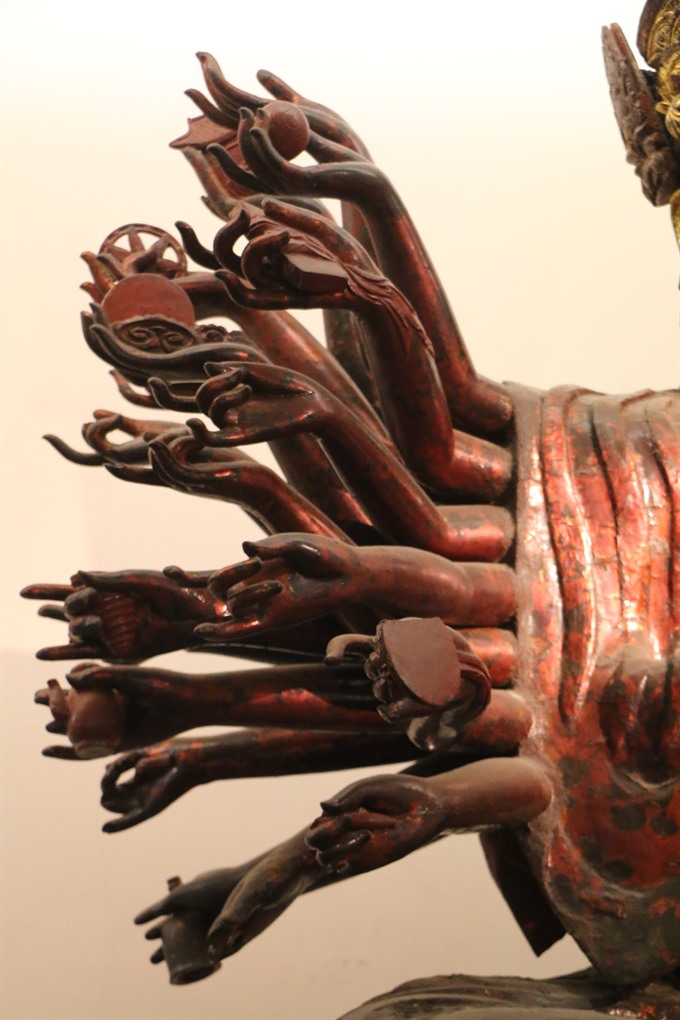 |
| Various poses: The right hands of the Goddess of Mercy. — VNS Photo Đoàn Tùng |
.
Wood statues
There are only two statues among the nine treasures.
One is the Kwan Yin (Bodhisattva Avalokiteshvara) statue originating from the Hội Hạ Pagoda in Vĩnh Phúc Province from the 16th century and the other is the statue of Queen Trịnh Thị Ngọc Trúc from the early 17th century.
Made in the 16th century, which was a turbulent time in the country’s history, the statue also bears the imprints of its time.
Professor Trần Lâm Biền, Việt Nam’s top researcher on ancient art history told Việt Nam News Sunday: “This statue shows the expertise of the folk craftsmen, who made Kwan-Yin, or Goddess of Mercy, who saves and steers sea-faring people.”
The 16th century saw a renaissance of Buddhism flourishing in the country. New pagodas were built and old ones refurbished, statues of Buddhas were carved out of wood.
|
|
| Pride of place: This statue of Kwan Yin shows a fuller figure, not as slender as the stone statue dating back to the Lý Dynasty in the 11 century. — VNS Photo Đoàn Tùng |
.
Worshipping Kwan Yin was popular then and some of the temples alongside the Red River and the Đáy River were dedicated to the Goddess of Mercy.
Back to the tour operator Nguyên from Hanoitourist, he said that Hà Nội boasts many museums so it distract tourists, unlike the one big museum everyone wants to go to like the National Museum of Singapore, or the Louvre in Paris.
“I guess because Vietnamese art is not popular around the world, so not many tourists want to come here (to the museum). Another reason is the curating process still needs more comprehensive restructuring. I see too many paintings on one level without adequate spacing and legends.”
As long as the many national treasures can be found in one place, it’s quite convenient for visitors to contemplate all of them in their precious one-hour museum visit. — VNS /Viet Nam News /By Nguyễn Mỹ Hà
NOTE : All photographs, news, editorials, opinions, information, data, others have been taken from the Internet ..aseanews.net | [email protected] | For comments, Email to : Goldenhands Arts Club | [email protected]| Contributor
